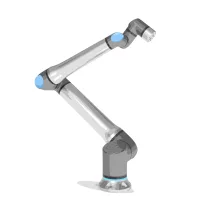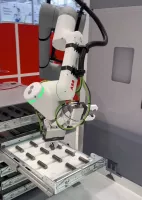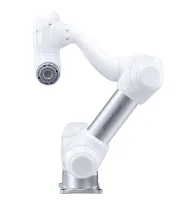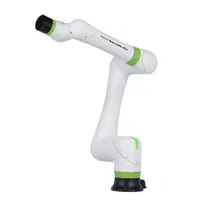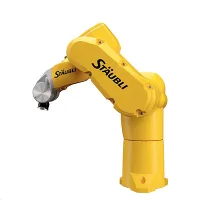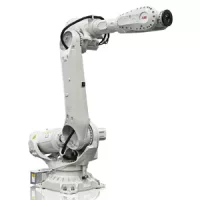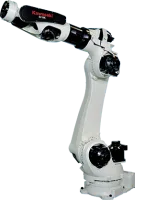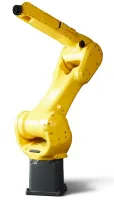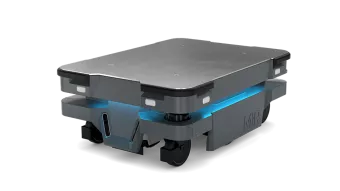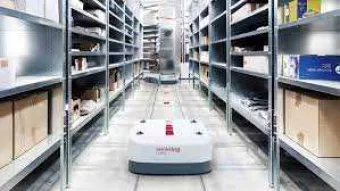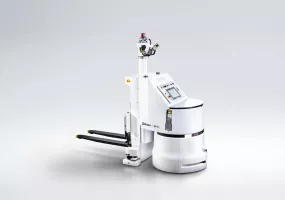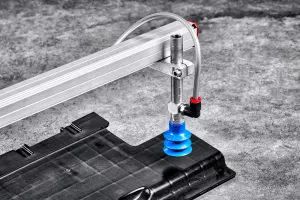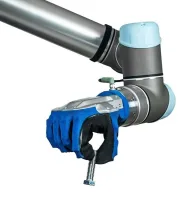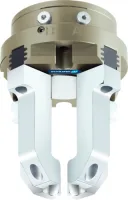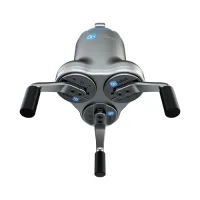ENHANCE YOUR PRODUCTION: THE POWER OF PICK AND PLACE
Transform Your Production Line with Speed, Safety, and Accuracy
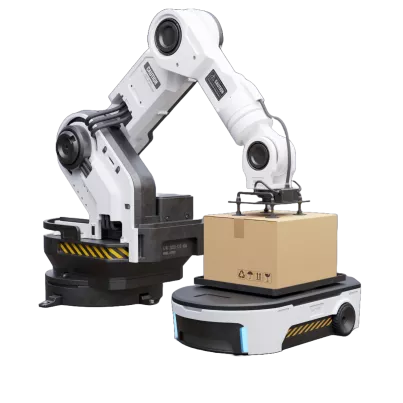
1. What is Pick and Place?
Pick and place technology is all about precision and efficiency. Imagine a robot arm that can quickly grab items from one place and accurately place them in another, whether it's assembling products, packaging goods, or sorting materials. This technology is a game-changer in many industries, making tasks faster, safer, and more cost-effective.
2. How It Works For You:
With pick and place robots, you can automate the repetitive task of moving items from point A to B. These robots are designed to handle various objects, regardless of size, shape, or material, with incredible precision. Whether you're in manufacturing, food processing, or electronics, these robots can significantly boost your productivity.
3. Why It Matters:
By integrating pick and place robots into your operations, you're not just speeding up production. You're also reducing the risk of injury among your staff by taking over monotonous or potentially dangerous tasks. Plus, with their ability to work tirelessly, these robots ensure your processes keep running smoothly, maximizing your output and quality.

4. What Industries Benefit From Pick and Place Robots?
Pick and Place Robots are a game-changer across various industries, making tasks faster, safer, and more efficient. If you're in sectors like manufacturing, electronics, food processing, or pharmaceuticals, these robots can significantly impact your operations. They're designed to handle repetitive tasks—like sorting, assembling, packaging, and labeling—with precision and speed. This not only boosts productivity but also reduces the risk of injuries from manual tasks.
For your business, this means if you're dealing with high-volume production or require precise handling of components, Pick and Place Robots can be your go-to solution. They're adaptable, meaning they can be customized for specific tasks, whether it's handling delicate food items or assembling tiny electronic components. This flexibility also means they're a fit for various settings, from clean rooms in pharmaceuticals to the fast-paced environment of automotive assembly lines.
In essence, no matter your industry, if efficiency, safety, and quality are your priorities, Pick and Place Robots could be the innovative solution you need to stay competitive and meet the demands of modern production lines.
Featured Pick and Place Cobots:
5. What are the Main Applications of Pick and Place Robots?
Pick and Place Robots: Key Applications
Assembly: Your production line can become more efficient with robots placing parts into assemblies. They fit components together quickly and accurately, speeding up the entire manufacturing process.
Packaging: These robots can transform your packaging process. They quickly pack products into boxes, ensuring each item is securely placed for shipping. This not only speeds up your operations but also reduces the risk of damage.
Inspection: With precision handling, robots can also move items under inspection equipment. They ensure every product is checked for quality, maintaining your standards without slowing down the workflow.
Material Handling: If your business involves moving items from one place to another, these robots are ideal. They handle materials safely and efficiently, reducing manual labor and the risk of injuries.
In essence, Pick and Place Robots can significantly improve your operations, whether you're assembling products, packaging goods, conducting inspections, or handling materials. They bring speed, accuracy, and safety to your processes, making them invaluable assets in today's fast-paced business environment.
6. What Advantages Do Pick and Place Systems Offer?
Pick and Place Systems: Top Benefits
Speed and Efficiency:
With these systems, your production can move faster than ever. They work tirelessly, ensuring tasks like assembling, sorting, and packaging are completed quickly. This boosts your output and helps meet tight deadlines.
Precision and Quality:
You can count on these robots for accuracy. They handle parts and products with care, reducing errors and ensuring high-quality results every time. This precision is crucial for industries where even a small mistake can be costly.
Safety and Worker Well-being:
By taking over repetitive and potentially hazardous tasks, these systems keep your workforce safe and healthy. They can handle heavy lifting, operate in dangerous environments, and perform monotonous jobs, reducing the risk of injuries and improving workplace conditions.
Cost Savings:
In the long run, investing in Pick and Place systems can save you money. They reduce labor costs, minimize errors (and thus waste), and can work around the clock without breaks, making your operations more cost-effective.
7. How Fast and Accurate are Pick and Place Robots?
Pick and Place Robots are known for their speed and precision, significantly enhancing productivity in manufacturing environments. They can operate at high speeds, often completing tasks in seconds, which allows for rapid assembly lines or packaging processes. Their accuracy is equally impressive, with some models capable of positioning items with near-perfect precision, down to fractions of a millimeter. This combination of speed and accuracy makes them invaluable for tasks requiring quick, repetitive movements with exact placement, ensuring efficiency and reducing waste or errors in production lines.
8. What factors should be considered when choosing a Pick and Place Robot?
When you're in the market for a Pick and Place Robot, there are several key factors to consider to ensure you choose the right one for your needs. Here's a breakdown to help you make an informed decision:
Task Requirements:
First, think about what you need the robot to do. Different robots are optimized for specific tasks like assembly, packaging, or inspection. Identify your primary application to narrow down your options.
Payload Capacity:
Consider how much the items you need to move weigh. You'll need a robot that can handle your heaviest item comfortably. Overloading a robot can lead to malfunctions or damage, so choose one with the right payload capacity.
Speed and Precision:
Speed and precision are crucial. Assess how quickly and accurately the robot needs to operate to meet your production goals. Some tasks require high precision, while others prioritize speed.
Workspace Constraints:
Look at your available space. Robots come in various sizes, and you'll need one that fits within your workspace without disrupting other operations.
Integration with Existing Systems:
Can the robot integrate seamlessly with your current production line or software systems? Compatibility is key to ensuring a smooth operation and maximizing efficiency.
Cost and ROI:
Finally, evaluate the cost against the expected return on investment (ROI). While higher-end robots might offer more features, consider whether those features are necessary for your application and if they justify the cost.
By carefully considering these factors, you'll be better positioned to choose a Pick and Place Robot that meets your needs, improves your processes, and delivers value to your operations.
Featured Pick and Place Mobile Robots
9. Understanding the ROI of Pick and Place Robots:
Initial Investment vs. Long-term Savings:
When you invest in Pick and Place Robots, you're looking at an upfront cost that includes not just the robot but also installation, tooling, safety measures, and more. This might seem high initially, but the savings kick in over time. For a typical system, you might spend around $250,000 upfront. Yet, this investment can turn into $1.5 million of positive cash flow after 7 to 8 years due to reduced labor costs.
Total Cost of Ownership (TCO):
TCO is more than the purchase price. It includes maintenance, operating costs, and even refurbishments. Initially, maintenance might be as low as $500 per year, mainly for lubrication and batteries. Over time, you'll face costs for worn parts or a major refurbishment, which could be around 50% of the robot's value after 8-10 years.
Calculating Your ROI:
The ROI calculation considers the robot's total purchasing cost against savings from labor costs, increased productivity, and operational efficiency. For instance, replacing manual labor with robots can save you $15 to $20 per hour, as robots operate at an average cost of 75 cents an hour. Keep in mind, after covering the initial investment, the savings from automation significantly boost your cash flow.
Factors to Consider:
Your operational scale and industry type affect potential savings. Labor, energy, maintenance, and production supplies costs vary across industries, impacting your ROI. A detailed cost and risk assessment tailored to your facility ensures a more accurate ROI calculation.
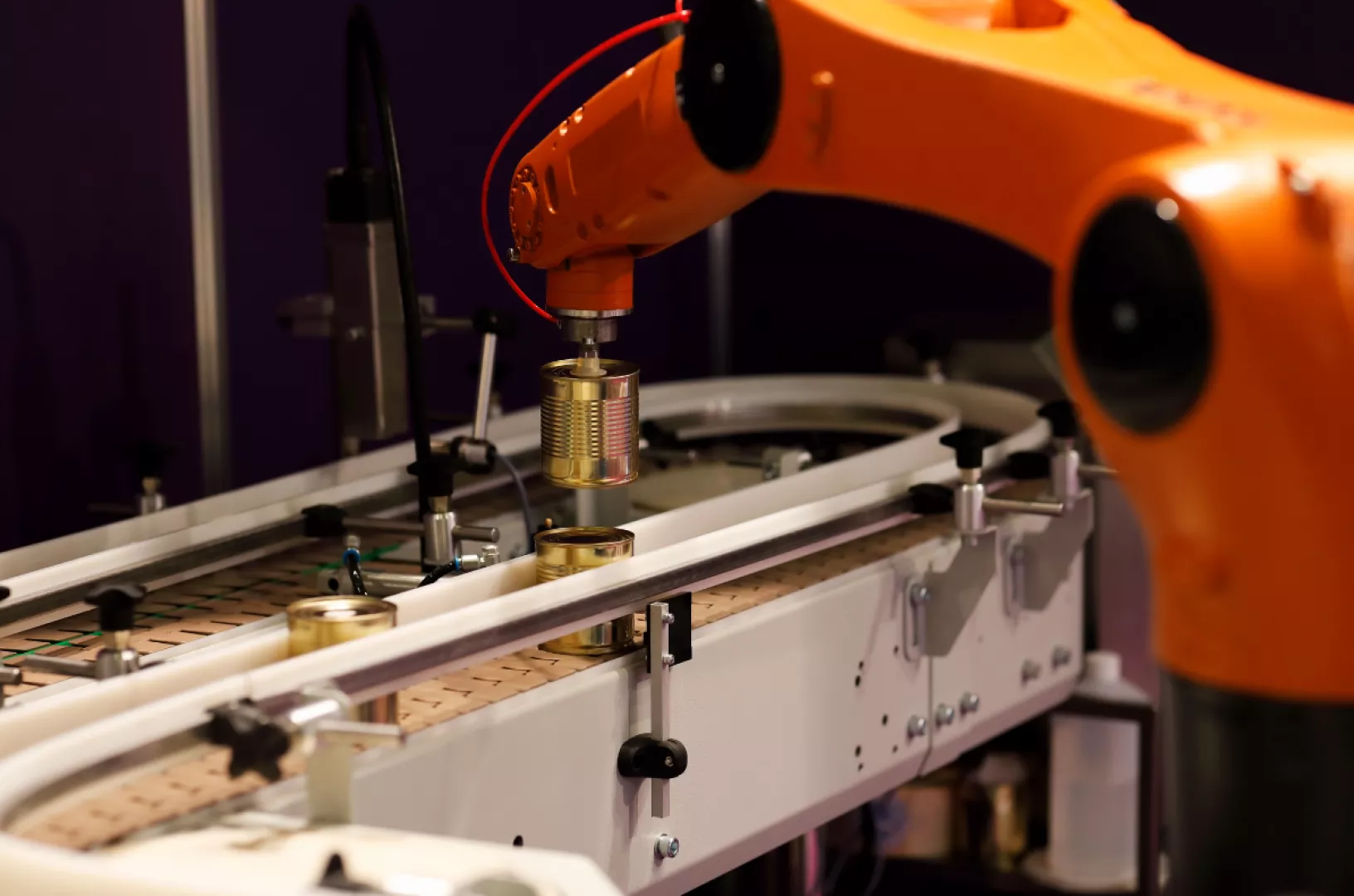
10. Handling Delicate and Irregular Items with Pick and Place Robots:
Gentle and Precise:
Pick and Place Robots are incredibly versatile, equipped to handle even the most delicate or oddly shaped items you might have on your production line. Thanks to advancements in end-of-arm tooling (EOAT), these robots can gently grasp and move items without causing damage. This means whether you're dealing with fragile electronics, delicate foods, or irregularly shaped components, a Pick and Place Robot can be tailored to meet your needs.
Smart Technology:
Moreover, the integration of vision systems into these robots has been a game-changer. These systems allow robots to see and identify various shapes and sizes, adjusting their grip and handling method accordingly. Whether your items are uniform or vary significantly, the robot can adapt its approach for each task, ensuring every item is treated with the care it requires.
Featured Educational Grippers:
Need help or have questions? Contact us or book a meeting with Sven, our expert, for personalized support.

